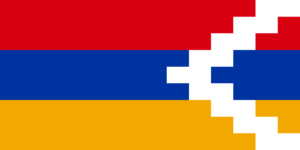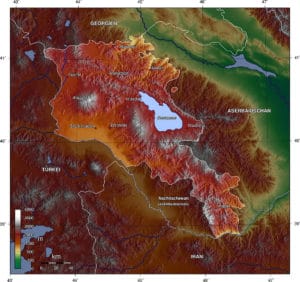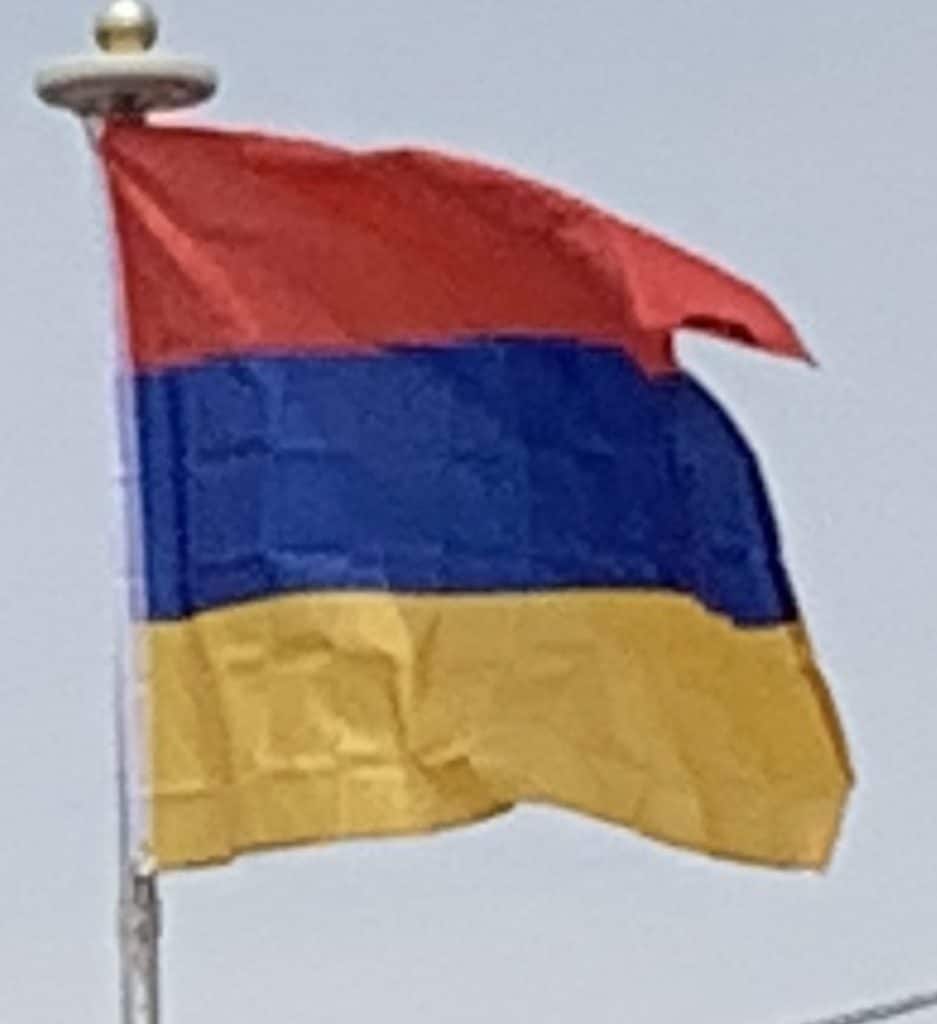
As it enters the 21st century, Armenia faces many hardships. It has made a full switch to a market economy. One study ranks it the 41st most “economically free” nation in the world, as of 2014. Its relations with Europe, the Middle East, and the Commonwealth of Independent States have allowed Armenia to increase trade. Gas, oil, and other supplies come through two vital routes: Iran and Georgia. Armenia maintains cordial relations with both countries.
Geography:
Armenia is a landlocked country in the geopolitical Transcaucasus (South Caucasus) region, that is located in the Southern Caucasus Mountains and their lowlands between the Black Sea and Caspian Sea, and northeast of the Armenian Highlands. Armenia is bordered on the north by Georgia, the east by Azerbaijan; the south by Iran; and the southwest and west by Turkey.
The Republic of Armenia has a territorial area of 11,484 sq miles. The terrain is mostly mountainous, with fast flowing rivers, and few forests. The land rises to 13,419 feet above sea level at Mount Aragats, and no point is below 1,280 feet above sea level. Average elevation of the country area is 10th highest in the world and it has 85.9% mountain area, more than Switzerland or Nepal.

Mount Ararat, which was historically part of Armenia, is the highest mountain in the region. Now located in Turkey, but clearly visible from Armenia, it is regarded by the Armenians as a symbol of their land. Because of this, the mountain is present on the Armenian national emblem today.
Economy:
The economy relies heavily on investment and support from Armenians abroad. Before independence, Armenia’s economy was largely industry-based – chemicals, electronics, machinery, processed food, synthetic rubber, and textile – and highly dependent on outside resources. The republic had developed a modern industrial sector, supplying machine tools, textiles, and other manufactured goods to sister republics in exchange for raw materials and energy. Recently, the Intel Corporation agreed to open a research centre in Armenia, in addition to other technology companies, signalling the growth of the technology industry in Armenia.
Agriculture accounted for less than 20% of both net material product and total employment before the dissolution of the Soviet Union in 1991. After independence, the importance of agriculture in the economy increased markedly, its share at the end of the 1990s rising to more than 30% of GDP and more than 40% of total employment. This increase in the importance of agriculture was attributable to food security needs of the population in the face of uncertainty during the first phases of transition and the collapse of the non-agricultural sectors of the economy in the early 1990s. As the economic situation stabilized and growth resumed, the share of agriculture in GDP dropped to slightly over 20% (2006 data), although the share of agriculture in employment remained more than 40%.
Armenian mines produce copper, zinc, gold, and lead. The vast majority of energy is produced with fuel imported from Russia, including gas and nuclear fuel (for its one nuclear power plant); the main domestic energy source is hydroelectric. Small deposits of coal, gas, and petroleum exist but have not yet been developed.
